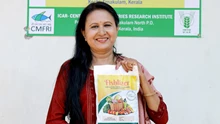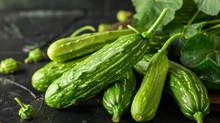
Bananas are the fourth most important food crop after wheat, rice and corn in terms of gross value of production. Now Indian scientists have used the latest gene editing techniques to modify the banana genome, for the first time. India is the largest producer of bananas globally.
By using the CRISPR/Cas9 gene editing technique, moves can be made to improve nutritional quality, Agronomically important traits as well as pathogen resistance in bananas, scientists claim.
Research being done by a group of Indian researchers At the National Agri-Food Biotechnology Institute in Mohali. The study results have been published in the Functional & Integrative Genomics journal. This is the first ever research study published on genome editing in any fruit crops from India, according to Dr Siddharth Tiwari, who led the research team.
CRISPR/Cas9 technology lets scientists remove or replace specific parts of DNA with precision. CRISPR stands for “Clustered Regularly Interspaced Short Palindromic Repeats” which basically finds the targeted DNA. Cas9 stands for “CRISPR Associated protein 9” which is basically an endonuclease or a sort of ‘biological scissors’ with which DNA can be edited accurately.

The next "super food" may not be an exotic berry or seed—it may the humble banana, thanks to new advancements in genetics that allow farmers to boost fruits' vitamin content.
Scientists recently announced they have modified bananas to up their vitamin A levels, something they say will save millions of malnourished people from dying or going blind from vitamin A deficiency (VAD). Since they are using a technique that doesn't require any foreign genomes but rather just tweaking the existing banana DNA, the super banana is a "genetically engineered organism" (GEO) rather than the more controversial genetically modified organism (GMO). But are GEO fruits safe to eat?
While many well-nourished Americans are leery of foods that have been genetically altered in any way, this is the perfect example that the science can be beneficial, says Lance Batchelor, Ph.D, a molecular biologist in the genetics department of the University of Oklahoma School of Medicine.
The enriched bananas are similar to the development of Golden Rice two decades ago when normal white rice was genetically modified to have 23 times more alpha- and beta- carotene—the precursors to Vitamin A—and distributed to the poor in several Asian countries. While it's not without controversy, the project has widely been considered a success with estimates that it saves about 1 million children a year.
In the meantime, the super banana is set to start clinical trials in the U.S. with the hopes of distributing it to African growers by 2020. The only visible change is that the flesh of the banana is more orange than white.










